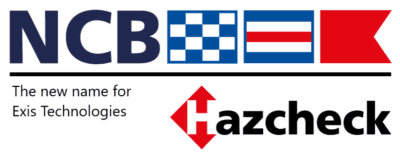Safety of life and cargo at sea
This IMDG Code Free Summary of Changes 40-20 document summarises the amendments being introduced in the Amendment 40-20 edition of the IMDG Code which may be used on an optional basis from 1 January 2021 until it becomes mandatory on June 1 2022.
Note, during this extended transitional period Amendment 39-18 can continue to be used.
The IMDG Code 40-20 changes notes are intended to provide an overview of the changes being introduced and should not be regarded as a complete listing of amendments. Reference must be made to the text of Amendment 40-20 for full details of all the amendments and applicable requirements.
IMDG Code Free Summary of Changes 40-20 – Brief summary
- Less headline changes than normal Amendments resulting from the restrictions imposed on IMO meetings due to the coronavirus pandemic, impacting the normal work agenda, however there are still several hundred changes to consider
- Harmonised with the update to Model regulations, 21st edition
- Several changes to the definitions in chapter 1.2, This includes, a new definition for ‘dose rate’ which replaces radiation level, the definition of which is now deleted; existing definitions for ‘GHS’, ‘Liquids’, ‘Manual of Tests and Criteria’, ‘Self-accelerating decomposition temperature (SADT)’, ‘Transport index”, ‘Self-accelerating polymerization temperature (SAPT)’ have been amended
- The indicative list of high consequence dangerous goods in 1.4.3.1.2. has been updated to reflect the addition of the new A40 UN Numbers
- In Part 2, there are various amendments in the class chapters, in particular for class 6.2 in 2.6.3 and class 7 in 2.7.2. For class 7 radioactive materials the new SCO-III classification criteria is included. Other editorial updates are provided for classes 1, 5.2, 8 and 9 in 2.1.3.5.2, 2.5.3.2.4, 2.8.3.2 and 2.9.2.2 respectively.
- In 3.1.2.9, the requirement if a N.O.S. or generic entry is a marine pollutant, the technical name of the pollutant must be given now applies only to N.O.S. entries; other generics will not need it. The examples provided to illustrate these have been amended.
- There have been several amendments to current entries in the segregation groups affecting groups 7, 8, 11, 15, 17 and 18. There are four alcoholate entries assigned to the Alkalis – SGG18 group: UN 1289, 1431, 3206 and 3274
- There are four new UN Numbers added to the DGL, 0511, 0512 and 0513 DETONATORS, ELECTRONIC programmable for blasting and 3549 MEDICAL WASTE, CATEGORY A, AFFECTING HUMANS, solid or MEDICAL WASTE, CATEGORY A, AFFECTING ANIMALS only, solid.
- There are the usual raft of changes to entries in the DGL. These include the following general changes:
- All explosive articles with packing instruction P130 now have LP101 as well
- SP392 has been added to column 6 for several compressed gas entries, e.g. UN 1066
- TP 35/37/38/39 – these were dependant on dates that have now expired so have been removed from column 15 for several entries
- SP76 saying transport is prohibited except with competent authority approval is deleted. Some of the UN Numbers previously allocated to it have been given stowage categories, SW and H codes and can be sent without special approval. Others have been given SP976 which says something similar to the former SP76
- There are amendments to several Special Provisions and SP951 has been deleted and there are seven new provisions.
- SP274 now says that the technical name cannot be the PSN of any UN Number, except that for 3077 and 3082 only, it may be one that does not include N.O.S. and does not itself have SP274, A valid example is UN 3082 ENVIRONMENTALLY HAZARDOUS SUBSTANCE, LIQUID, N.O.S. (paint)
- There have been several updates to existing packing instructions and the following new packing instructions added: P622, LP622.
- P801 applying to batteries of UN 2794, 2795 and 3028 has been completely replaced.
- The dimensions of the lithium battery mark have been slight reduced and can now be square in shape
- The requirement to include flashpoint on the dangerous goods transport document is revised to specifically reference both primary and subsidiary hazards
- There is a new requirement to note on the transport document when lithium cells or batteries are offered for transport under special provision 376 or special provision 377, with the wording “DAMAGED/DEFECTIVE”, “LITHIUM BATTERIES FOR DISPOSAL” or “LITHIUM BATTERIES FOR RECYCLING
- There is a new 5.5.4 added for “Dangerous goods contained in equipment in use or intended for use during carriage, attached to or placed in packages, overpacks, containers or load compartments”. Here it confirms that dangerous goods (e.g. lithium batteries, fuel cell cartridges) contained in equipment such as data loggers and cargo tracking devices, attached to or placed in packages, overpacks, containers or load compartments are not subject to the IMDG Code provided a range of conditions being met.
- T75 tanks for refrigerated liquefied gases need to be marked END OF HOLDING TIME dd/mm/yyyy (DD/MM/YYYY) so it is actually a date rather than a time.
- Part 6 has several minor changes to some of the Chapters
- The stowage provisions included in 7.1.4.2 applicable to marine pollutants have now also been applied to infectious substances of UN 2814, 2900 and 3549
- SW22 now applies to waste gas cartridges as well as waste aerosols, so there is a change of stowage category for WASTE. The change of stowage category for maximum 1 L or above 1 L still applies only to aerosols.
- There is a new ‘H5’ handling code applicable to class 6.2 infectious substances
- SG27, SG28 and SG34 applying to some explosives now say ‘separated from’ instead of ‘away from’
- SG53 is revised and changes from ‘separated from’ liquid organic substances to ‘Shall not be stowed together with combustible material in the same cargo transport unit’, so it also covers solids and inorganics, and it no longer requires segregation between CTUs.
- The Emergency Response Schedules have been updated to the latest Amdt40 changes. This includes updating the spillage schedule ‘S-S’ for radioactive material. The Index to these schedules is updated to reflect recent changes, primarily concerning corrections to replace spillage provisions with underlined equivalents to take into account the special cases that apply to marine pollutants, and adding several entries to take into account distinctions in provision of emergency schedules as per packing groups.
This IMDG Code Free Summary of Changes 40-20 summary was produced by Exis Technologies, supplier of Hazcheck Systems for compliance in the management of dangerous goods in sea transport and e-learning courses for the transport industry. Exis has been part of the NCB Group since 2018 and together their not for profit mission is the Safety of Life and Cargo at Sea.
The IMDG Code Summary of Changes is also available in Spanish, French, Traditional Chinese and Simplified Chinese.
The IMDG Code is produced by the International Maritime Organization.
IMPORTANT:
This is a guide only. Users must check with official sources before relying on the information.
Exis Technologies accepts no responsibility for errors or omissions.
Download the DETAILED SUMMARY OF CHANGES here
New: IMDG Code Amendment 40-20 – May 2022 Corrigenda – see the full Corrigenda on IMO’s website here







